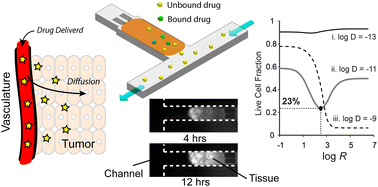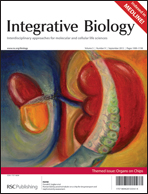Intratumoral transport and binding are important mechanisms that determine the efficacy of cancer drugs. Current drug screening methods rely heavily on monolayers of cancer cells, which overlook the contribution of tissue-level transport and binding. To quantify these factors, we developed a method that couples an in vitro, drug-delivery device containing a three-dimensional cell mass and a mathematical model of drug diffusion, binding to DNA, release from carriers, and clearance. Spheroids derived from LS174T human colon carcinoma cells were inserted into rectangular chambers to form rectangular cell masses (tissue) and subjected to continuous medium perfusion. To simulate drug delivery and clearance, the tissues were treated with doxorubicin followed by drug-free medium. To evaluate the effect of liposome encapsulation, tissues were treated with liposome-encapsulated doxorubicin (Doxil). Spatiotemporal dynamics of drug distribution and apoptosis was measured by fluorescence microscopy. The diffusivity and DNA binding constant of doxorubicin were determined by fitting experimental data to the mathematical model. Results show that an ideal combination of diffusivity, binding constant, clearance rate, and cytotoxicity contribute to the high therapeutic efficacy of doxorubicin. There was no detectable release of doxorubicin from Doxil in the tissues. The rate of doxorubicin release, evaluated by fitting experimental data to the mathematical model, was below therapeutically effective levels. These results show that despite enhanced systemic circulation obtained by liposome encapsulation, the therapeutic effect of Doxil is limited by slow intratumoral drug release. The experimental and computational methods developed here to calculate drug efficacy provide mechanisms to explain poor performance of drug candidates, and enable design of more successful cancer drugs.

You have access to this article
 Please wait while we load your content...
Something went wrong. Try again?
Please wait while we load your content...
Something went wrong. Try again?


 Please wait while we load your content...
Please wait while we load your content...